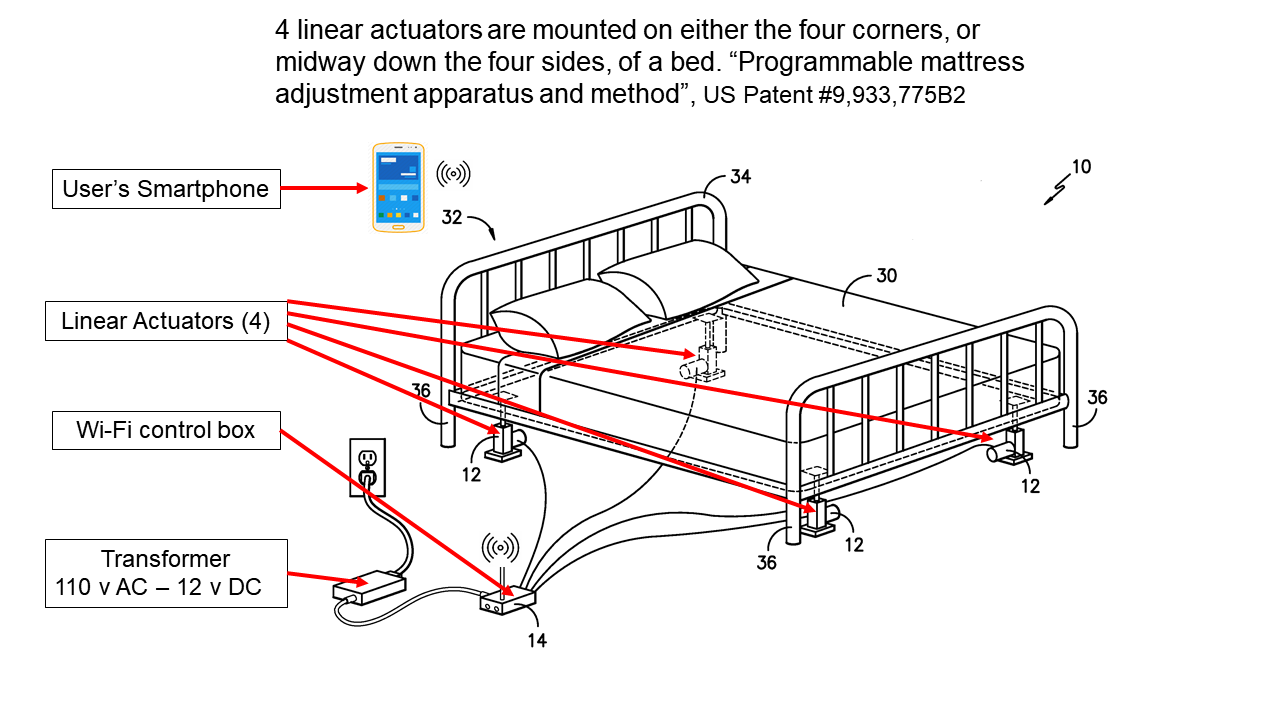Have you ever slept on a sailboat? The gentle, random rocking motions spread, distribute, and relieve the pressure points that inevitably occur while we sleep. Numerous studies have shown that people change their position 42 times per night, or every 11 minutes, on average, although they may not come to full consciousness each time. This disturbs and interrupts the deep, restorative sleep our bodies need. Changing position resets all of the pressure points, while simultaneously setting up new ones. We do this automatically, usually without conscious thought, while standing (shifting on our feet) and sitting (changing positions in our chairs).
Relieving the pressure points that develop while lying in the same position is critical for avoiding pressure ulcers (bed sores) in people confined to their beds for long periods, be it from paralysis, injury, surgery recovery, intensive care, burns, and others.
In addition, perhaps you have wondered “Why do babies cry at night for no apparent reason?” Could it be that they also develop painful pressure points, just like adults, but have very limited ability to change their position? So they cry until the caregiver picks them up, walks them around, and lays them back down, thus relieving all the prior pressure points?
A South Carolina (USA) company called Look For The Power LLC has an innovative approach to these familiar problems. They use linear actuators to produce small motions of beds. These clever devices – powerful, small, low-voltage and quiet – convert the rotary motion of motors into small linear motions to raise and lower either the four corners or the four sides of a bed. The linear motions are very accurately defined and precisely controlled.
The four linear actuators may be programmed and controlled by a software phone app that allows the user to program, save, replay, loop, and share custom sequences.

So, for example, a user could start the app and lay the phone by the bed. For maybe 15 minutes nothing happens. Then, one corner or side of the bed might be lifted 0.5”. Five minutes later, the opposite corner or side could rise 1.0”. Each of the four actuators might have a range of motion of 2 inches total, in 0.25” increments. The possibilities for sequences, patterns, ranges of motions, frequency, and loops are limited only by the user’s imagination. The result is the same in each case – gentle, almost imperceptible motions of the bed that reset and distribute all the pressure points while the user sleeps. John Saavedra, the inventor, likes to imagine recording and then playing back the sequence for a sailboat gently rocking at anchor – very restful and relaxing. Used in a hospital newborn nursery, several cribs could be placed on a single device, very gently rocking the infants, mitigating both the painful pressure points and the ‘flat-spotting’ that may occur in the babies’ still-developing cranial bones.

Almost every week we read new clinical evidence of the need for sound, restful sleep in personal productivity, creativity, and an ever-increasing range of critical factors in overall health and wellness. These range from cardio-vascular, respiratory, neuro-muscular, and a wide range of autoimmune conditions, up to and including anxiety, depression, stress, job performance, test scores, suicide, memory loss, Alzheimer’s disease, life satisfaction indicators, and peak athletic performance. According to the National Institutes of Health (NIH), approximately 50-70 million people in the U.S. are affected by a chronic sleep disorder or intermittent sleep problem1.
One of the more thorough studies aimed at consumers is “The Sleep Revolution: Transforming Your Life, One Night at a Time” by Arianna Huffington, Harmony, 2016.
For more details on this project and others, please visit
http://www.lookforthepower.com/bed.html
The company Look For The Power LLC seeks a partner to bring this to market. If interested, or if you know of someone who might be, please contact [email protected]
Saavedra, John A., (2018), “Programmable mattress adjustment apparatus and method”, US Patent No. 9,933,775 B2.
1https://www.nhlbi.nih.gov/health-topics/sleep-deprivation-and-deficiency#

